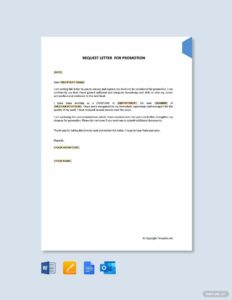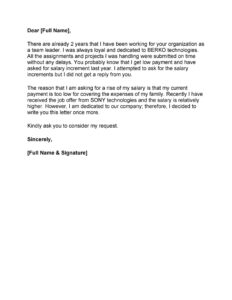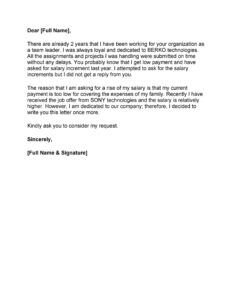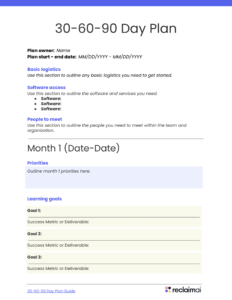Utilizing such a structure offers several advantages. It helps ensure all necessary information is included, promoting a professional and well-reasoned request. A clear and concise presentation can improve the likelihood of a favorable outcome. Furthermore, pre-designed formats can alleviate stress and save time, allowing individuals to focus on tailoring the content to their specific circumstances and accomplishments.
The following sections will explore the key components of a well-crafted compensation proposal, offering practical guidance and examples to help individuals effectively advocate for their professional worth.
Key Components of a Compensation Proposal
Effective proposals for increased compensation share common structural elements. These components work together to create a persuasive argument, supporting the request with concrete evidence and a clear rationale.
1. Current Role and Responsibilities: Briefly describe the current job title, key responsibilities, and scope of work. This sets the context for the request and demonstrates an understanding of current contributions.
2. Performance Highlights and Achievements: Quantifiable achievements and contributions exceeding expectations should be highlighted. Specific examples with measurable results demonstrate value and impact.
3. Market Research and Salary Data: Researching industry benchmarks and salary ranges for comparable roles strengthens the justification for the proposed increase. Reliable data sources should be cited.
4. Proposed Salary and Justification: A clear and specific salary expectation should be presented, justified by the preceding performance review and market analysis. A reasonable and well-supported figure enhances credibility.
5. Future Goals and Contributions: Expressing future goals and outlining planned contributions demonstrates continued commitment and potential for further growth within the organization.
6. Professional Development and Skill Enhancement: Highlighting recent professional development activities, new skills acquired, or certifications earned further reinforces value and dedication to career advancement.
7. Expression of Gratitude and Continued Commitment: Conveying appreciation for the current opportunity and expressing continued dedication to the organization reinforces a positive and professional tone.
A well-structured proposal combining performance data, market analysis, and future aspirations presents a compelling argument for increased compensation, increasing the likelihood of a positive outcome.
How to Create a Request for Salary Increase Template
Creating a standardized framework for salary increase requests ensures consistency and professionalism across an organization. This structured approach facilitates clear communication and helps employees articulate their value proposition effectively.
1. Define Scope and Purpose: Determine the template’s target audience and the types of roles it should cover. Consider whether separate templates might be necessary for different departments or levels of seniority.
2. Structure Key Sections: Establish distinct sections for essential information. Common sections include current role and responsibilities, performance highlights, market data justification, proposed salary, and future contributions. A clear structure ensures all relevant information is included.
3. Incorporate Guidance and Prompts: Offer helpful prompts and guiding questions within each section. These prompts can aid employees in articulating accomplishments, quantifying contributions, and justifying the desired increase. Clear guidance promotes well-supported requests.
4. Provide Examples: Illustrate effective writing techniques with concrete examples. Sample phrases and data presentation methods provide practical guidance and enhance clarity. Examples facilitate understanding and encourage consistent formatting.
5. Ensure Accessibility and Distribution: Make the template easily accessible to all employees. Consider providing it in multiple formats (e.g., Word document, PDF) and distributing it through relevant channels such as internal networks or employee handbooks. Easy access encourages utilization.
6. Regularly Review and Update: Periodically review and update the template to reflect current market trends, company policies, and best practices. Regular revisions maintain relevance and ensure continued effectiveness.
A well-designed template provides a valuable resource, empowering employees to advocate for their professional growth while maintaining a consistent and professional approach to compensation discussions.
Standardized frameworks for requesting compensation adjustments offer a valuable tool for both employees and organizations. These templates provide a clear structure for presenting a well-reasoned justification, supporting data, and future goals. Utilizing such a framework promotes consistency, professionalism, and transparency in compensation discussions. Key components include a concise description of current responsibilities, quantifiable achievements, relevant market data, a clearly stated desired salary, and a commitment to future contributions. Providing resources like templates empowers employees to advocate effectively for career advancement while supporting informed decision-making within the organization.
Strategic implementation of these tools contributes to a positive and productive work environment where compensation reflects individual contributions and market value. Cultivating open communication around compensation fosters a culture of mutual respect and shared success, ultimately benefiting both employees and the organization’s long-term growth.



